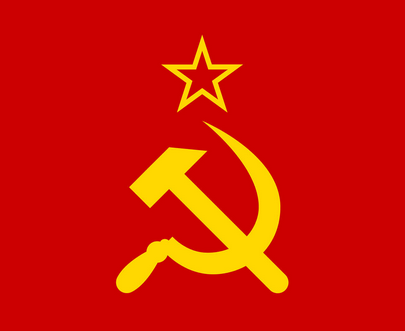Im doing an alternate history scenario with a friend and this is my map for 1980. I wanted some fresh eyes to look at this and give some history changes.
the only relavent alteration of history i have here is that I changed the result of the Ecuadorian elections which made it less dependent on the USA.


India was not calling itself socialist, my point is that in terms of regional geopolitics it was VERY much Soviet-aligned. It used a lot of Soviet military hardware, it trained with the Soviets, the USSR supported India’s foreign policy decisions like with the Bangladeshi War of Independence to the point of sending a fleet to confront the Brits and Americans over their attempt to stop Indian involvement, one of the breaking points of the Sino-Soviet split was the USSR staying neutral during the '59 border conflict of China and India, the USSR was sending more aid of all kinds to India by 1960 than it ever had to China including MIGs which China never got and had to design their own copy of, etc.
That is not even getting into all the more civilian diplomatic connections and inter-leader relationships. Suffice is to say, India is firm Soviet aligned regardless of ideology. https://online.ucpress.edu/as/article-abstract/7/3/165/24092/India-and-the-USSR-The-Post-Nehru-Period?redirectedFrom=fulltext
If you want to make the key for the map gradients of two blocs then it has to factor for some countries being literally NAM members, but further into one bloc than “allies” and “friendly” countries may be. I would recommend the game China: Mao’s Legacy for its starting map in late 1979, it has shades for ideology, as well as a map mode for economic membership and military alliances. I don’t agree with every single choice, but it is a really good indicator of the blocs at this exact moment. Like you really can’t talk 1980 without China as its own bloc if you are going by blocs or spheres of influence over membership, then Bangladesh for sure is not a co-operative nation. By this point it was swinging right, removing socialism from the constitution, leaving the Indo-Soviet Bloc, and strengthening ties with the West and strong military ties with China. If color marks closeness, then India has to be more redish than Bangladesh.
Myanmar is another case that stands out for its particular distance from the Soviet bloc. As you said, calling yourself socialist does not determine the nature of a country. Myanmar at this time was still led by Ne Win who at this point was not even trying to work with the Socialist Bloc. There is a paper from 1981 that questions and determines that Burma was not even attempting a socialist society and was mostly vestigial in its definitionally socialist economy (IE a command economy). https://www.sciencedirect.com/science/article/abs/pii/0305750X81900437?via%3Dihub
Burma had just entered back into real relations with China again after the anti-Chinese pogroms in '67, with diplomatic relations not restored until 1970, in the wake of the 1979 NAM conference which they felt was controlled by Cuba and the USSR. So hostile to the USSR since the 60s, hostile to China since the 60s and only now pivoting to China after having already begun to swing to the West for a while. Burma is one such country that fits in either a Chinese bloc or has to be NAM even though at your start date it just left.
While an outright state dept mouthpiece, the wilson center’s american POV of this dynamic is actually a good tool for at least how the US foreign policy hawks viewed Myanmar’s place in all this https://www.wilsoncenter.org/publication/reassessing-china-myanmar-relations-during-the-cold-war